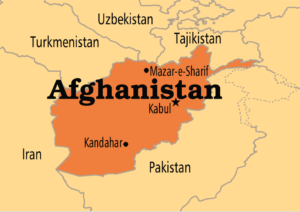July 3, 2018 Gul Maqsood Sabit
The recent announcement of a ceasefire by the Afghan government and then Taliban agreement to a Three-day ceasefire is rather encouraging and hopeful of a long-term peace deal. It is a great opportunity for the world community involved in Afghanistan to strongly support the ceasefire and encourage the Taliban and Afghan government to extend the ceasefire and pave the way for negotiations. Peace negotiations and a possible peace deal must be accompanied by robust investment in creating economic and employment opportunities for the population to sustain peace and ensure stability.
This is the first time a ceasefire has been agreed to since 2001, when the international community intervened in Afghanistan to oust the then-powerful Taliban group who ruled more than ninety five percent of the country. Since Afghans have suffered enormously in the last 16 years, a three-day ceasefire seems light at the end of tunnel to them. After hearing about the ceasefire, Afghans are thankfully celebrating the historic ceasefire throughout the cities.
While the news is encouraging, it is important to address the reasons for the longest US war in history. How can Taliban sustain themselves against the world’s strongest militaries for so many years? The list of the causes could be a lengthy one, but poverty and unemployment are at the heart. Allot has been achieved in various sectors, but the root cause that has fueled the war has been ignored.
Afghanistan’s poverty rate has worsened sharply over the years as the economy has stalled and the Taliban insurgency has spread, with more than half the population living on less than a dollar a day, according to aid agencies’ reports and surveys. Economic growth has been either negative or 1 to 2 percent the last few years. According to IMF projections, economy is set to grow at 2.5-3 percent in 2017-18, too slowly to stop unemployment from rising. The country needs to create 400,000 new jobs to keep pace with population growth. Tens of thousands of qualified people struggle to find work in cities, and farmers are unable to earn a sustainable livelihood due to the drought. The Afghanistan Living Conditions Survey (ALCS), a joint study by the European Union and Afghanistan’s Central Statistics Organization, showed the national poverty rate has risen to 55 percent in 2016-17 from 38 percent in 2011-12.
There is no hospital, not many schools where kids can study and no work opportunities. Kids either study in mosques under Mullas (religious scholars) or grow up illiterate becoming more fuel for the Taliban and other anti-government groups. What do they do to secure themselves and feed themselves; they join the Taliban who pay them a salary and their families are protected both from the Taliban themselves and other warlords and criminals. They can also grow poppies in their land freely for more economic gains.
Aid agencies and those providing technical assistance to Afghanistan offer all kinds of reasons for the worsening economic, governance, security and social situation. They have had some key achievements, but have failed to address the root cause of the problem raising concerns about the management of billions of dollars in aid money. The situation has compelled young people to join Taliban and give them strength.
To ensure stability and continued peace in the country, a comprehensive action plan to create economic opportunities and jobs must be prepared and implemented simultaneously with a possible peace deal. The plan must entail a short-term strategy and state ways how to engage the young and deprived population either in education or jobs. A new donor aid package will be required at the beginning to initiate such a comprehensive program consisting of projects in several sectors including energy, transportation, agriculture, security, mining, education, health and others with the aim to assimilate a destitute populace and spur long-term economic growth. Keeping in mind Afghanistan’s abundant natural resources and its location as a south and central Asian trade hub, sustaining the projects will not be difficult.
A sustainable livelihood, no matter how small, will immediately weaken the insurgency and its base, and will prevent creation of another insurgency. Peace will not be sustained unless poverty is tackled and population is lead to build a livelihood by including them part of an economic program. Only a peace deal will not stabilize Afghanistan. If the root cause of poverty and lack of a basic living is not addressed, the poverty stricken population will simply join another anti-government group or those who are against a peaceful Afghanistan may create a new group.

